After Dr. Murrell completed his ophthalmology residency, he trained at a prestigious oculoplastic fellowship with Robert Wilkins, M.D. at the University of Texas. Dr. Wilkins wrote the landmark chapter on Blepharoplasty in the textbook “Oculoplastics.” One can consider this textbook a cornerstone of Oculoplastic knowledge.
Since learning from the best, Dr. Murrell has performed thousands of eyelid surgeries. His goal is to eliminate any medical issue in the eyelid and to provide aesthetically beautiful, natural-looking results with as minimal treatment as possible.
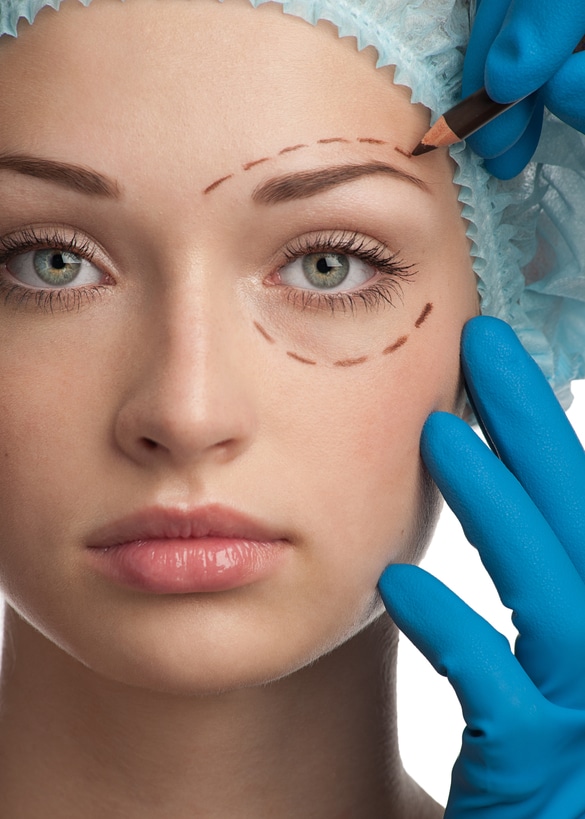
Dr. Murrell wants his patients to walk away looking and feeling more confident, more youthful, and more like themselves.
What Is Eyelid Surgery?
Eyelid surgery is a procedure that helps correct eyelid malpositions, improve eyelid function and enhance eyelid appearance. The most common eyelid surgery is blepharoplasty which is done to remove excessive eyelids skin and underlying fat. The goal of blepharoplasty is to tighten the skin and lessen or remove puffiness and sagging.
Since the eyelid skin is very thin it is often one of the first areas to show signs of aging. Eyelids that sag or droop can affect peripheral vision, making daily activities such as driving more difficult. Patients may require a blepharoplasty when various factors such as aging, sun damage, smoking, and obesity, cause the skin to stretch and underlying tissues to weaken.
Eyelid Surgery Before And After Photos
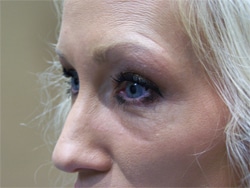
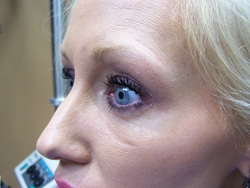
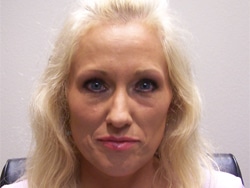
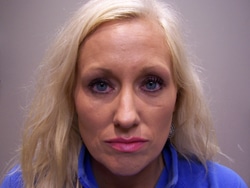
Eyelid Surgery Patient Testimonials
"My experience with Dr. Murrell has been very pleasant and very effective. I am thankful my primary doctor recommended him. I will recommend him to all"
"Had a real good experience. Everything was explained clearly and everybody was pleasant and professional. The ladies who handle booking and insurance are the best. I’m very pleased with the results. Thank y’all."
Who Is A Good Candidate For Blepharoplasty?
Eyelid surgery is one of the few cosmetic procedures that are popular with both women and men. This is because aging eyes don’t play favorites by gender. In fact, over the last decade, more and more men are having the procedure to compete with younger counterparts at the office.
Blepharoplasty candidates commonly have sagging skin and fat pockets under their eyes. In addition, the sagging skin and excess fat can interfere with the patient’s field of vision. In both cases, patients can receive a blepharoplasty to correct one or both concerns. Patients that are interested in undergoing surgery must have eye conditions, such as dry eye, under control first as it would interfere with the surgery and the results.
Benefits Of Eyelid Surgery With Dr. Murrell
Most people say the eyes are the area of the face they notice first when meeting a new person and sagging eyelids can make a person appear tired and much older. Cosmetic eyelid surgery with Dr. Murrell can take years off the facial age of the patient. Plus, those improvements can last up to 10-20 years. Eyelid surgery will make you look younger and more refreshed.

Types Of Blepharoplasty
If patients are unhappy with the appearance of their eyelids or having trouble seeing, they can undergo eyelid surgery. Dr. Murrell performs eyelid surgery for functional, reconstructive, and cosmetic purposes.
Functional Blepharoplasty
If the eyelids begin sagging into the field of vision, patients may want to consider a functional blepharoplasty. The procedure may be covered by medical insurance if it is deemed medically necessary. Dr. Murrell can determine how much vision is affected by checking the peripheral visual field with an instrument called the Humphrey Visual Field (HVF) Analyzer.
Eyelid Reconstruction Surgery
Dr. Murrell usually performs reconstructive surgery after the removal of an eyelid tumor. Dr. Murrell takes tissue from an adjacent eyelid or nearby area and uses it to reconstruct the eyelid that previously had the tumor.
Cosmetic Blepharoplasty
Cosmetic blepharoplasty is ideal for patients with stretched skin or fat protrusions that do not interfere with vision or field of vision. The blepharoplasty procedure is therefore not medically necessary in this case and will not be covered by insurance.
The Blepharoplasty Procedure
Patients can choose to have eyelid surgery on one or both eyelids. Both procedures start with small incisions. During upper eyelid surgery, Dr. Murrell will make the incision in the natural crease of the eyelid, concealing it effectively. Then, he will remove excess skin, reposition or remove fat, and tighten the underlying muscle tissue.
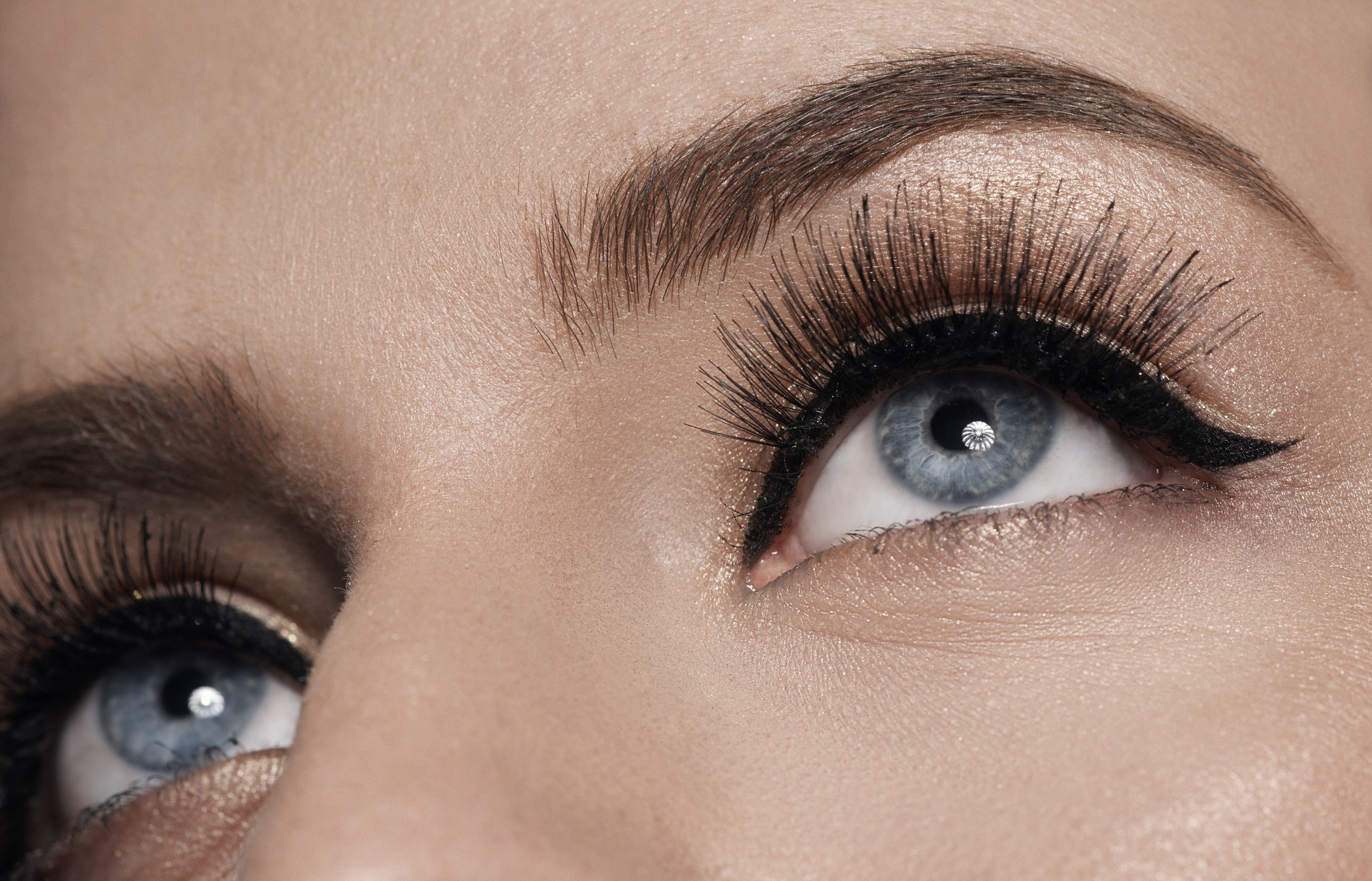
During lower eyelid surgery, Dr. Murrell can make one of two incisions. It can be placed just below the lower eyelash or inside the lower eyelid. Next, Dr. Murrell removes excess skin to eliminate puffiness and bags.
During both procedures, Dr. Murrell pays particular attention to fat in both eyelids since he does not want to remove too much. If that were to happen patients could have a hollowed-out appearance. Instead, Dr. Murrell removes some of the fat and contours the area to maintain a natural and healthy look.
Where Does Dr. Murrell Perform Eyelid Surgery?
In addition to Blepharoplasties, Dr. Murrell’s surgeries also include ptosis repair, ectropion repair, entropion repair, eyelid tumor removal, eyelid reconstruction, and tear duct surgery. Dr. Murrell performs these operations in his surgery building, The Amarillo Cataract and Eye Surgery Center. This is an outpatient surgery center located just three buildings away from his main office. This facility is dedicated to performing eye and eyelid surgeries only, has an exceptional reputation, and has been in operation since 1991.
In addition to the above-mentioned procedures, Dr. Murrell removes eyelid lesions, performs eyelid biopsies, and does Botox injections for patients with blepharospasm and hemifacial spasm. He performs these minor procedures in his main office at the Panhandle Eye Group building.
What Happens During Blepharoplasty Recovery?

Does Insurance Cover Blepharoplasty?
When you visit our Amarillo, TX office for a Blepharoplasty evaluation, please be aware that your insurance may not cover the surgery. Upper lid blepharoplasty can sometimes be considered medically necessary because it can interfere with the superior or lateral field of vision. In other cases, it is not considered medically necessary. As a result, eyelid surgery is not covered by insurance and is self-pay.
Eyelid Surgery Cost And Regulations
Eyelid surgery, especially on the upper eyelid, requires a pre-certification from the insurance company (except for Medicare). Please give your insurance company about a month to reply. Any insurance requirements will be verified by our surgery coordinator prior to surgery.
Due to scheduling conflicts or insurance regulations, testing and procedures often need to be on separate days. Once you and Dr. Murrell have chosen the best course of action, and the surgery has been pre-certified, our office can schedule your surgery.
Additional Eyelid Problems
During testing Dr. Murrell is looking for signs of eyelid problems such as the following:
- Ptosis of the upper eyelid (droopy lids)
- Ectropion of the lower lid (lid pulling down and/or out)
- Entropion of the lower lid (lid turning inward)
- Eyelid Lesion of the upper and/or lower eyelids
- Eyelid Tumors on the upper and/or lower eyelids
- Reconstructive Surgery on upper and/or lower lids
- Orbital Surgery (including tumor biopsy and tumor removal)
- Blepharospasm and Hemifacial Spasm
What To Expect During A Blepharoplasty Consultation With Dr. Murrell
Following an initial examination of your eyelids, you and Dr. Murrell will have a consultation about your oculoplastic issue. Dr. Murrell may also perform extra testing that can pinpoint the problem. This will help determine the best strategy or procedure to repair the eyelid. This testing can often be done in the office and includes external photos, visual field testing, tear duct testing, tear film analysis, and biopsy of eyelid lesions. We can also order testing outside the office such as CT scan, MRI and blood tests.
What I Need To Prepare Before The Procedure?
Before you can have a blepharoplasty done, there are a few preparations you’ll need to make. The first preparation involves assessing your current medication. There are certain medications and supplements that can interfere with the procedure. You’ll need to refrain from using any anti-inflammatories and blood thinners. If you’re a smoker, you’ll be asked to stop smoking for at least a month before and after the blepharoplasty.
Is Getting Blepharoplasty Painful?
Getting a blepharoplasty is considered to be one of the least painful cosmetic procedures. At the very worst, you’ll have some mild discomfort as it’s a minimally invasive procedure. During the surgery itself, you won’t feel anything during it due to the anesthetic being used.
What Are The Benefits Of Blepharoplasty?
There are many benefits you can enjoy upon receiving eyelid surgery.
These benefits can include:
- Giving you a more youthful appearance.
- Boosting your self-confidence.
- Fixing any visual impairments you may have from hooding or bags under the eyes.
- Providing long-lasting results.
Are There Any Risks Involved With Blepharoplasty?
Yes, like many cosmetic procedures, there are risks you need to know about beforehand.
Below is a list of all the risks to be aware of before getting eyelid surgery:
- You could have an allergic reaction to the anesthesia.
- The incision lines start to bleed.
- You experience swelling and bruising.
- You have persistent pain.
- You have trouble closing your eyes.
- Your lower eyelid may be pulled down.
- You contract an infection.
- You have increased sensitivity to the sunlight.
- You might need revision surgery.
- You have noticeable scarring.
The plastic surgeon will go over these risks and more in greater detail during your consultation. Although it’s incredibly rare for this to happen, there is a small chance that getting eyelid surgery negatively affects your vision. In even rarer cases, it could potentially cause blindness.
What Disqualifies You As A Candidate For Blepharoplasty?

During your consultation, the plastic surgeon will go over various factors to determine whether or not you’re a candidate for a blepharoplasty. If you suffer from a medical ailment, like dry eye, you may be disqualified. Having wrinkles and crow’s feet are also common reasons for disqualification.
Eyelid Surgery FAQs
Can I Wear Makeup or Contact Lenses after Surgery?
You should avoid wearing eye makeup and contact lenses for at least two weeks after eyelid surgery. Eye makeup, including mascara and eyeliner, can increase the risk of infection or interfere with healing. Contact lenses may irritate the surgical site or strain healing tissues, especially during the first stage of recovery. You are encouraged to wear glasses temporarily and resume contacts only after receiving clearance during a follow-up visit. When makeup is reintroduced, it’s best to use fresh, hypoallergenic products and gentle application techniques to avoid disrupting the incision site.
What’s the Difference Between a Brow Lift and Eyelid Surgery?
You may wonder whether a brow lift or eyelid surgery is better for addressing a heavy or tired appearance around your eyes. While both procedures focus on the upper face, they treat different issues. A brow lift raises the position of the eyebrows and smooths forehead lines, while eyelid surgery (blepharoplasty) removes excess eyelid skin and fat to open up the eye area.
Dr. Murrell specializes in eyelid surgery and helps patients understand whether their concerns are best addressed by blepharoplasty. In many cases, drooping or hooded eyelids can be improved significantly without needing any procedure on the brow itself. During consultation, Dr. Murrell evaluates the structure and function of the eyelids and provides expert guidance based on each patient’s facial anatomy and goals.
Is There a Non-Surgical Alternative to Eyelid Surgery?
While surgery provides the most long-lasting correction for excess eyelid skin and fat, non-surgical options exist for mild to moderate concerns. These include neurotoxin injections (such as Botox) to reduce forehead strain and elevate the brow, or energy-based treatments to tighten eyelid skin. However, these options cannot remove excess tissue or significantly improve vision-obstructing eyelid droop. If you are hesitant about surgery, non-invasive treatments can offer temporary improvement and delay the need for surgical intervention.
Is Eyelid Surgery Appropriate for Men?
Absolutely. Men increasingly seek eyelid surgery to correct drooping lids or puffiness that can make them appear tired or older. The goals of male blepharoplasty often focus on achieving a rested, alert appearance without feminizing the eyes. Dr. Murrell has performed eyelid surgery on many male patients and tailors each procedure to preserve masculine features while improving function and appearance.
Will Eyelid Surgery Change the Shape of My Eyes?
Blepharoplasty is designed to enhance the natural eyelid contour, not dramatically alter eye shape. In experienced hands, such as Dr. Murrell’s, the procedure maintains the patient's unique eye characteristics while improving skin laxity and puffiness. Care is taken to avoid overtightening or hollowing the eyelid, which can distort the shape. Most of his patients find that their eyes look refreshed yet familiar.
How Long Do the Results of Eyelid Surgery Last?
Eyelid surgery typically provides long-lasting results. Most patients enjoy the benefits of blepharoplasty — such as smoother, firmer eyelids and improved vision — for 10 to 15 years or longer. While the procedure doesn’t stop the natural aging process, it significantly resets the clock on sagging or puffy eyelids. Skin laxity may gradually return over time. Maintaining a healthy lifestyle, protecting the eyes from sun exposure, and avoiding smoking can help extend the longevity of the results. Dr. Murrell designs each procedure to deliver natural improvements that hold up well over time.
Schedule A Blepharoplasty Consultation
If you are interested in learning more about functional or cosmetic eyelid surgery and would like to see if you are a good candidate, please call (806) 351-1177 to schedule a consultation with Dr. Murrell at our office in Amarillo, TX. You can also click here to send us an Appointment Request Form, and we'll help you set up your one-on-one meeting with the doctor. Our practice looks forward to serving you!
